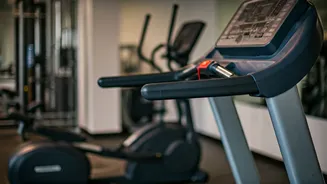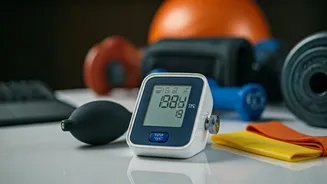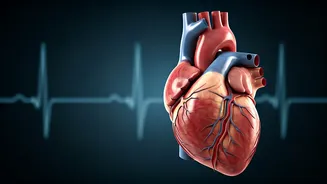Exercise's Crucial Role
Regular physical activity is vital for managing blood pressure, as emphasized by a top cardiologist. Engaging in the right kind of exercise can significantly
reduce hypertension, potentially eliminating the need for medication or minimizing its dosage. Exercise helps maintain a healthy weight, strengthens the cardiovascular system, and improves overall health, which collectively contribute to lowering blood pressure naturally. This proactive approach supports a holistic strategy for health, focusing on lifestyle changes to combat high blood pressure. Choosing the correct exercise routines is key for success. Incorporating them into daily routines makes it easier to manage blood pressure effectively. The cardiologist underscores that consistent exercise is a powerful tool in managing blood pressure.
Effective Exercise Types
Cardiologists often suggest various exercise types to aid in blood pressure management. Aerobic exercises, like brisk walking, jogging, cycling, and swimming, are especially effective. These exercises improve cardiovascular fitness, enhance blood flow, and lower blood pressure. Strength training is also recommended, as it supports overall muscle health, which indirectly affects blood pressure. Combining aerobic and strength training often yields the best results. Moreover, flexibility exercises such as yoga and stretching, promote relaxation and help reduce stress, which, in turn, can help in lowering blood pressure. The cardiologist stresses the importance of a balanced exercise routine.
Optimal Exercise Regimen
To effectively lower blood pressure, it's essential to follow a structured exercise regimen. Experts suggest aiming for at least 150 minutes of moderate-intensity aerobic exercise or 75 minutes of vigorous-intensity aerobic exercise per week. These guidelines can be distributed across several days, which promotes consistency. Strength training should be incorporated at least two days a week, focusing on all major muscle groups. Beginning with shorter sessions and gradually increasing duration and intensity over time is recommended. Listen to the body and adjust the regimen as needed. Regular check-ins with a healthcare provider can help monitor progress and ensure safety. This structured approach optimizes exercise's benefits, helping people manage blood pressure effectively and safely.
Beyond Exercise
Besides regular exercise, a holistic approach includes other lifestyle changes. Maintaining a balanced diet low in sodium, saturated fats, and processed foods is crucial. Reducing stress through mindfulness practices, such as meditation and deep breathing exercises, is also beneficial. Adequate sleep, typically about seven to eight hours per night, helps regulate blood pressure and enhances overall health. Limiting alcohol consumption and avoiding tobacco products are equally significant. These lifestyle modifications complement exercise, creating a synergistic effect that promotes improved heart health. The cardiologist advises combining these approaches to achieve comprehensive blood pressure control.
Consulting Professionals
Before starting any new exercise program, consulting with a healthcare professional is crucial. This step is particularly important for individuals with pre-existing health conditions or those who are new to exercise. A doctor can evaluate current health status and recommend an exercise plan tailored to individual needs. This professional guidance ensures safety and maximizes the effectiveness of the exercise. It's also important to discuss any symptoms or concerns throughout the exercise program with a healthcare provider. Regular monitoring of blood pressure, both during and after exercise, is also recommended to ensure the exercises are producing the desired effect. This proactive approach ensures safe and effective blood pressure management.













